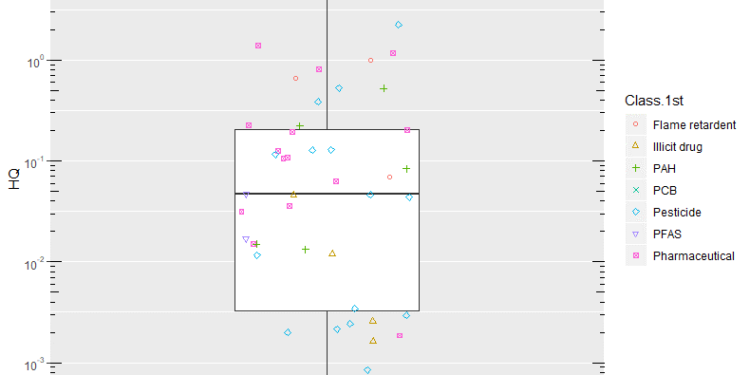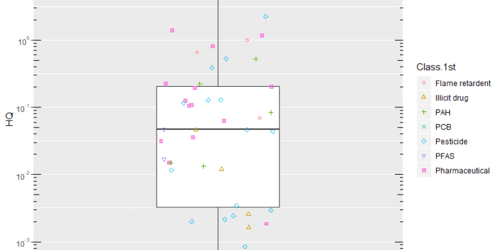Emerging contaminants and antibiotics in wastewater effluent

Emerging contaminants are chemicals contained in household and industry products used by Australians every day. Some of these chemicals find their way into wastewater effluent. James Cook University and Townsville City Council are assessing the potential impact of these contaminants on Cleveland Bay’s turtle populations.
There are potentially thousands of different emerging contaminants that may end up in our sewage, before being treated in treatment plants such as Townsville City Council’s Cleveland Bay Sewage Treatment Plant. Examples of contaminants include antibiotics and other drugs, flame retardants such as PFAS, insecticides such as DEET, personal care products such as sunscreen, microplastics and other contaminants.
The Cleveland Bay Sewage Treatment Plant (CBSTP) services more than 100,000 equivalent persons from Townsville suburbs and releases treated effluent into Cleveland Bay, adjacent to the Great Barrier Reef. The presence of emerging contaminants in treated effluent can pose a serious risk to both our health and the environment, which is important because Cleveland Bay is a popular fishing spot and home to iconic species such as turtles and dugongs.
Despite potential impacts, we know little about the types and concentrations of emerging contaminants entering and leaving the CBSTP or how effective the plant’s membrane bioreactor performs in removing emerging contaminants.
James Cook University’s Engineering and Biomedical Scientists, supported by Townsville City Council, are undertaking research to identify if there are any emerging contaminants in Townsville’s sewage or treated wastewater. Research is seeking to better understand the environmental risk of emerging contaminants in Cleveland Bay and better manage future contamination issues.
PhD student and GHD chemical engineer Laura Kuskopf is investigating which emerging contaminants go in and out of the treatment plant and where they end up when they are released into Cleveland Bay. Physiology and pharmacology PhD student Kezia Drane is looking at a specific group of emerging contaminants called antibiotics.
These compounds can lead to growth of antibiotic resistant bacteria. Kezia is testing for the presence of antibiotic resistant genes in the treated water and will be assessing whether antibiotic resistance ends up in Cleveland Bay turtle populations and what impact that may have on turtle health.
In research completed so far, 304 emerging contaminants were carefully selected for analysis in labs in Townsville and Brisbane. Sixty-five percent of the emerging contaminants tested were not detected in the effluent at all, but 69 emerging contaminants were detected at very low concentrations in the treated wastewater released from the treatment plant.
Concentrations were generally detected at nanogram per litre levels. The treatment plant is effective in reducing most emerging contaminants from sewage. Of the contaminants that were detected in sewage there were average reductions of 75%.
 Figure: Hazard quotients for treated effluent released from the Cleveland Bay Sewage Treatment Plant (based on chemical class).
Figure: Hazard quotients for treated effluent released from the Cleveland Bay Sewage Treatment Plant (based on chemical class).
Antibiotics such azithromycin and sulfamethoxazole made it into the treatment plant at measurable concentrations, providing the right conditions for generating antibiotic resistant genes.
Early results using simple risk methods (called Hazards Quotients) suggest that only four emerging contaminants from an array of chemical classes may present a possible risk to the environment and these should be looked at more closely:
- Organophosphate flame retardant tris (2-chloroisopropyl) (TCIPP) phosphate (HQ=55) [“high risk”]
- Pesticide terbutryn (HQ=2.2) [“low risk”]
- Pharmaceutical and nicotine drug metabolite cotinine (HQ=1.4) [“low risk”]
- Antibiotic azithromycin (HQ=1.2) [“low risk”]
More work is needed to quantify and understand the risk associated with emerging contaminants once they enter the natural environment.
Excerpt from:
Kuskopf, Sheehan, Whelan; Contaminants of emerging concern: Developing a sampling and analysis quality plan for the Cleveland Bay Purification Plant, Australian Water Association e-Journal, 2020.

